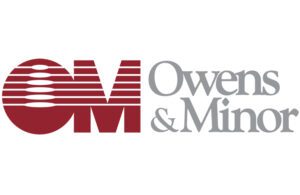
Owens & Minor executive pay dropped year-over-year, the device manufacturer told investors ahead of this week’s annual meeting.
Richmond, Virginia-based Owens & Minor (NYSE:OMI) is the 13th-largest medical device company in the world, according to Medical Design & Outsourcing‘s 2022 Medtech Big 100 list. That ranking was based on Owens & Minor’s $9.8 billion in 2021 revenue.
The company reported nearly $10.0 billion in revenue for 2022 and acquired home medical equipment developer Apria for $1.7 billion last year.
Net income soared from $30 million in 2020 to $222 million in 2021 thanks in part to COVID-19 pandemic sales of personal protective equipment, but decreased to $22 million last year. The company announced a realignment initiative in February and cut employees in March.
“We believe this program will enhance our strong quality of service to our customers, increase our margins, and allow us to more rapidly reduce debt and reinvest in higher-growth and more profitable opportunities,” President and CEO Edward Pesicka said in February.
The program is ongoing, Pesicka said last week when announcing Q1 2023 results. “These initiatives are progressing well, and we are on pace to reach our adjusted operating income target of $30 million for the year.”
Shareholders will weigh in on the company’s executive compensation this Thursday in an advisory “say-on-pay” vote.
Owens & Minor executive pay
Owens & Minor reported $6.2 million in 2022 total compensation for Pesicka, down 19% from the year before.
Pesicka’s 2022 pay included a $974,954 salary, $4.9 million in stock awards and a $273,000 cash performance incentive. He also received $81,408 in other compensation, including $49,514 worth of personal travel on corporate aircraft, $15,000 for tax planning and $12,200 for the company’s defined contributions plan.
The second-highest-paid executive was Apria CEO Daniel Starck, who took on the additional title of Owens & Minor EVP and Patient Direct president after the acquisition. Starck made $5.1 million in 2022; the company did not disclose his prior-year pay.
EVP and Products & Healthcare Services CEO Andrew Long made $3.1 million, down 14% from the year before. He was promoted from the role of chief financial officer in October to replace former EVP, Chief Operating Officer and Products and Healthcare Services President Jeffrey Jochims.
Jochims was the third-highest-paid executive at $2.9 million, down 20% from the year before. He resigned at the request of the company effective Oct. 12 but remained an employee through the end of the year, “at which time his separation was treated as a termination without cause,” the company said.
EVP and Chief Human Resources Officer Tammy Gomez made $2.8 million last year, including a $400,000 cash sign-on bonus for joining the company in July 2022.
EVP, General Counsel and Corporate Secretary Nicholas Pace made $1.9 million, down 25% from the year before.
Finally, EVP and Chief Financial Officer Alexander Bruni made $875,361 last year. He was promoted to replace Long as CFO last year. His prior-year pay was not disclosed.
Owens & Minor employees and pay
Owens & Minor had 22,500 employees at the end of 2022, according to its latest annual report. The company reported 13,400 full-time and part-time employees in the U.S. and 9,100 foreign workers. That total employee count is up 30% from 17,300 last year.
The company’s latest proxy filing also included its CEO pay ratio. The SEC requires publicly traded companies to calculate a pay ratio showing how much the CEO makes compared to the median employee.
Total pay for the median Owens & Minor worker was $6,216, up from $6,853 the year before.
That latest median wage and Pesicka $13.6 million pay package puts Owens & Minor’s CEO compensation at 1,005 times more than the median employee’s pay. That’s down from last year’s 1,121:1 ratio, but it’s still one of the largest gaps — if not the largest gap — among Medtech Big 100 companies.
Owens & Minor said the latest calculation does not include any of Apria’s 6,400 employees, and that the pay ratio “should not be used as a basis for comparison between companies” given the different ways companies estimate the pay ratios within the SEC’s rules.
More on executive pay:
- ZimVie discloses executive pay and severance for first C-suite exit
- Baxter CEO pay dropped amid Hillrom challenges
- Boston Scientific discloses executive pay, reports employment and diversity gains
- Ashley McEvoy joins J&J’s top-paid executives
- Stryker discloses $40M in pay for CEO Kevin Lobo and top execs
- GE HealthCare’s CEO earned more than GE’s CEO before spinoff
- Baxter caps cash severance payouts for executives
- Masimo shareholders vote ‘no’ on executive pay
- Henry Schein investors push back on executive pay